In 2023, the attraction of the great outdoors continued to draw millions to the United States National Park Service (NPS) sites, with ten parks leading the charge in visitor numbers. These sanctuaries of natural beauty offer a diverse range of landscapes, from the rugged mountains of the West to the serene forests of the East. This guide explores the essence of each park, providing a comprehensive overview, insider tips, and essential travel advice to ensure a memorable visit.
1. Great Smoky Mountains National Park (13.29 million visitors)
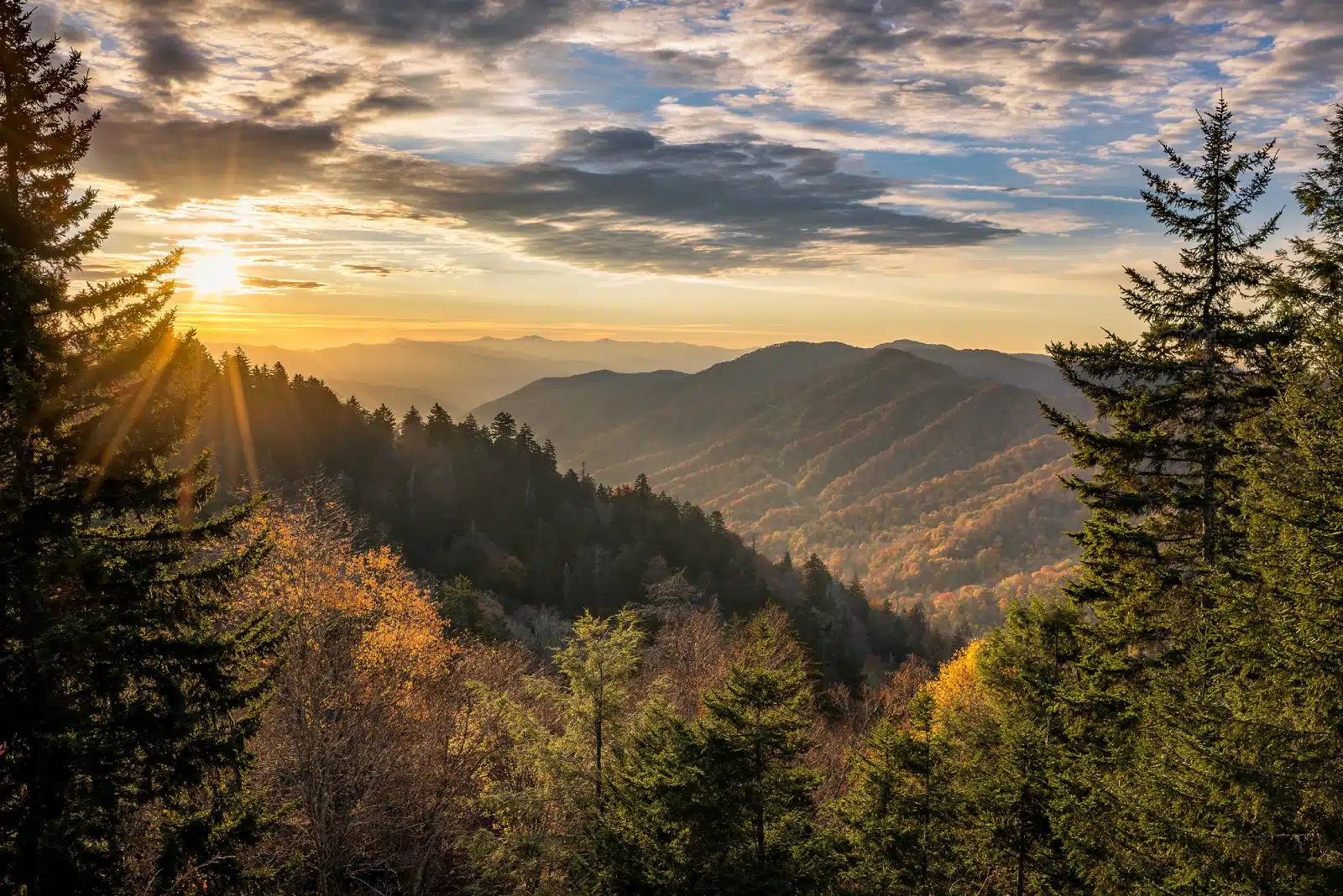
Image Credit: Shutterstock / anthony heflin
Great Smoky Mountains National Park embraces Appalachian culture and natural beauty by crossing the border between North Carolina and Tennessee. This UNESCO World Heritage Site is famed for its diversity of plant and animal life, the beauty of its ancient mountains, and the remnants of Southern Appalachian mountain culture. With over 800 miles of trails, visitors can explore lush forests, discover cascading waterfalls, and observe a wide array of wildlife. The park’s historical significance is highlighted through preserved structures such as log cabins, barns, and churches, offering a glimpse into the lives of early settlers. The mystical quality of the smoky fog that gives the mountains their name creates an ethereal backdrop for hiking, photography, and simply soaking in the serene landscapes.
Insider’s Tip: For a unique experience, explore the park’s lesser-known trails to escape the crowds. The Middle Prong Trail in the Tremont area offers stunning waterfalls and quieter paths.
When to Travel: Early spring or late fall are ideal times to visit. The wildflowers in spring and the vibrant foliage in fall provide spectacular views, with fewer visitors than the summer months.
How to Get There: The nearest major airports are in Knoxville, Tennessee, and Asheville, North Carolina. From these cities, rental cars are available to reach the park’s various entrances.
2. Grand Canyon National Park (4.73 million visitors)
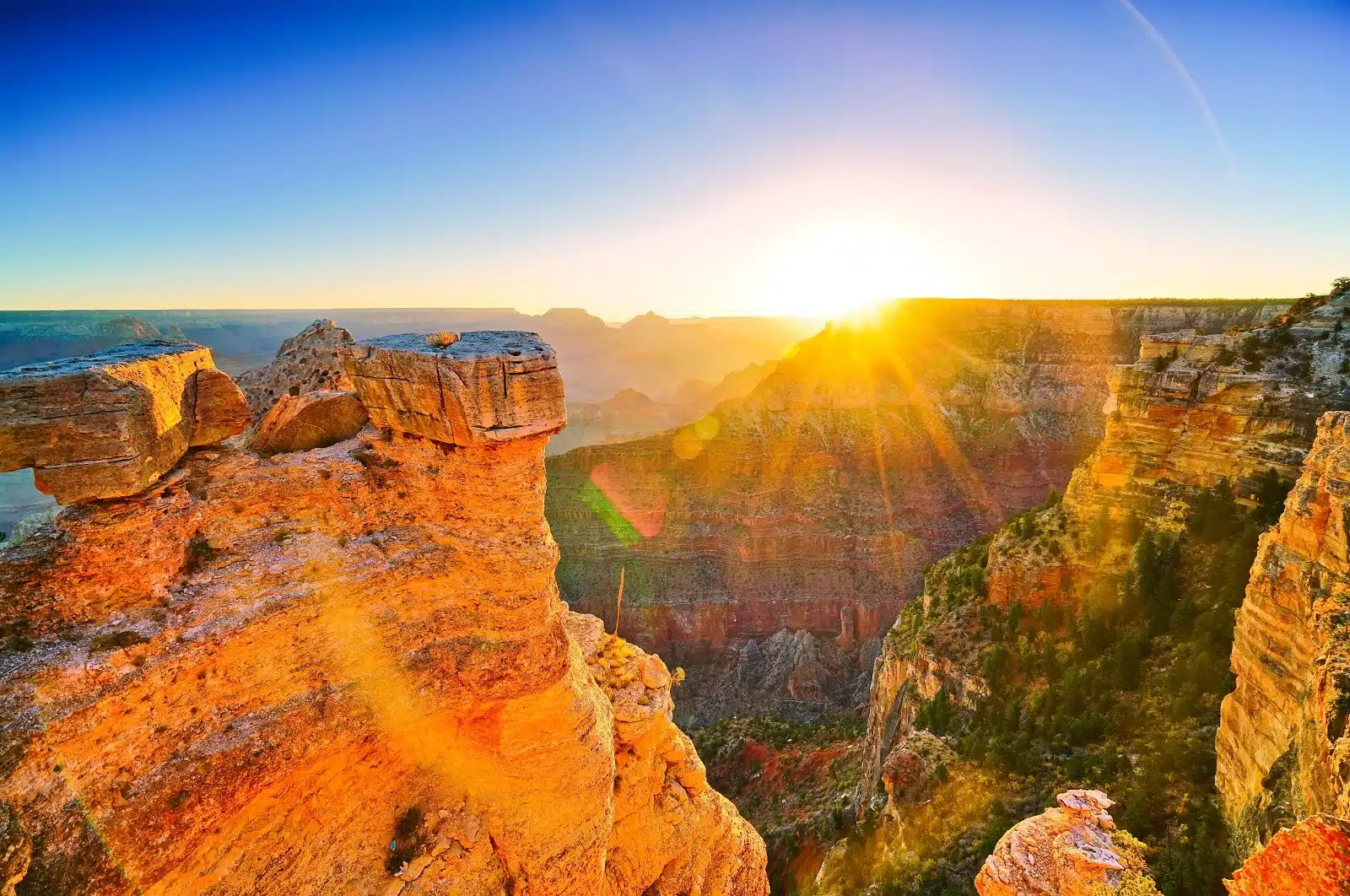
Image Credit: Shutterstock / Javen
The Grand Canyon, a vast natural wonder, stretches 277 miles across the arid landscapes of northern Arizona. Carved by the Colorado River over millions of years, the canyon’s layers tell the story of Earth’s geological history. The park is divided into the South Rim, known for its easily accessible viewpoints and services, and the North Rim, which offers a more secluded experience. Visitors can engage in various activities, from scenic drives and educational programs to backcountry hiking and river rafting. The Grand Canyon Skywalk, on the West Rim, provides a unique perspective with its glass walkway extending over the canyon. Whether standing at the edge of the rim, watching the play of light at sunrise or sunset, or exploring the depths of the inner canyon, the Grand Canyon National Park offers an unparalleled experience of nature’s grandeur.
Insider’s Tip: Consider visiting the North Rim for a more secluded experience. Though it requires more effort to reach, the North Rim provides a peaceful alternative with equally breathtaking views.
When to Travel: The South Rim is open year-round, but the North Rim is closed during winter months due to snow. May and September offer pleasant weather and thinner crowds.
How to Get There: The South Rim is accessible from Flagstaff, Arizona, with the nearest international airport located in Phoenix. The North Rim is more remote, with access typically from Las Vegas or Salt Lake City.
3. Zion National Park (4.62 million visitors)
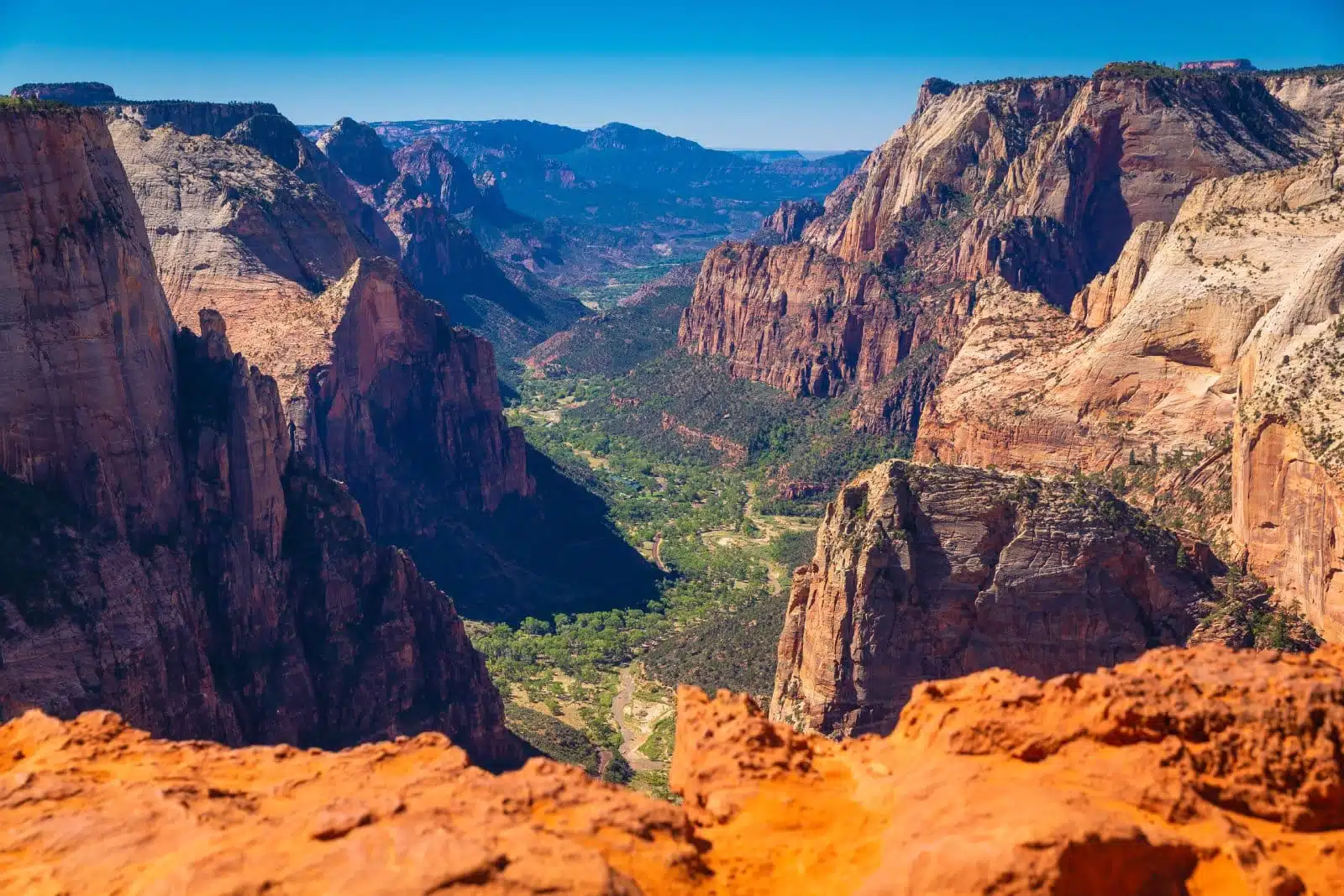
Image Credit: Shutterstock / VivL
Zion National Park, located in southwestern Utah, is a sanctuary of massive sandstone cliffs soaring into the clear blue sky. The park’s unique geography has created a variety of habitats, making it a hotspot for biodiversity. Hiking trails range from easy walks along the Virgin River to challenging climbs up sheer cliffs. Iconic hikes such as The Narrows, where visitors wade through the river between towering canyon walls, and Angel’s Landing, with its breathtaking views, are must-dos. Beyond hiking, Zion offers canyoneering, rock climbing, and bird-watching opportunities. The park’s human history is equally fascinating, with ancient petroglyphs and pioneer cabins dotting the landscape. Zion’s natural beauty and cultural significance provide a profound sense of awe and a deep connection to the natural world.
Insider’s Tip: To avoid the crowds on popular trails, start your hike early in the morning or explore lesser-known areas like the Kolob Canyons section of the park.
When to Travel: Spring (April to June) and fall (September to November) offer mild weather and fewer visitors compared to the summer months.
How to Get There: The closest major airport is in Las Vegas, Nevada, which is a three-hour drive to the park. Shuttle services and car rentals are available.
4. Yellowstone National Park (4.50 million visitors)
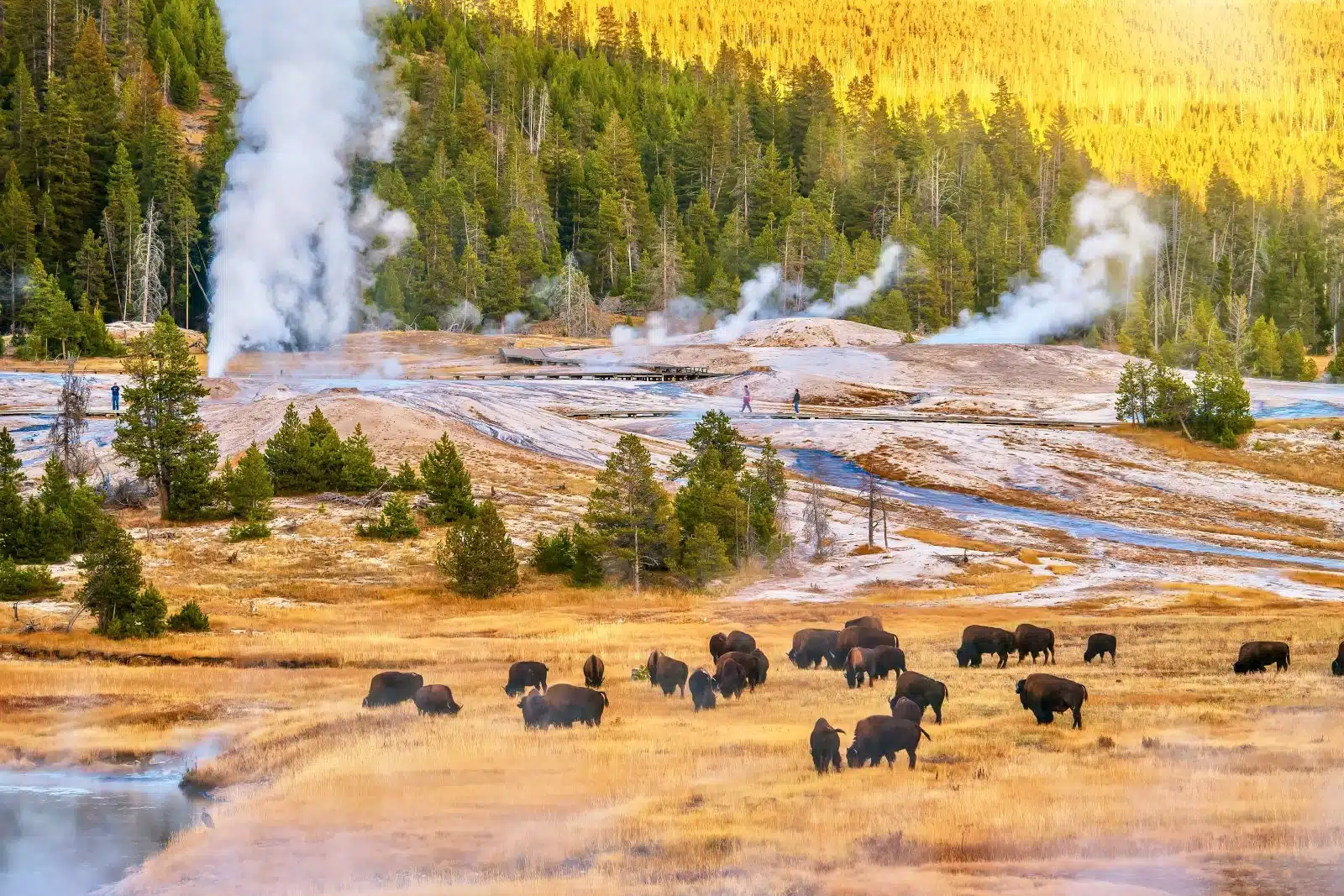
Image Credit: Shutterstock / CherylRamalho
Yellowstone National Park, the first national park in the world, is a vast wilderness area known for its geothermal features, including the iconic Old Faithful geyser and the Grand Prismatic Spring. The park spans Wyoming, Montana, and Idaho, featuring dramatic canyons, alpine rivers, lush forests, and expansive lakes. It is a haven for wildlife enthusiasts, allowing them to see bison, elk, wolves, and bears in their natural habitat. Yellowstone’s volcanic activity creates a constantly changing landscape, with bubbling mud pots, steaming fumaroles, and over 10,000 hot springs. The park’s 2.2 million acres are a testament to the power and beauty of nature, inviting exploration and offering endless opportunities for adventure and discovery.
Insider’s Tip: Explore the park’s less-visited areas, such as the Lamar Valley, for wildlife viewing and a more solitary experience.
When to Travel: May and September shoulder seasons are ideal, offering pleasant weather with fewer tourists than the peak summer months.
How to Get There: Yellowstone is accessible via several airports, including Bozeman, Montana, and Jackson Hole, Wyoming. Car rentals are necessary to explore the park.
5. Rocky Mountain National Park (4.11 million visitors)
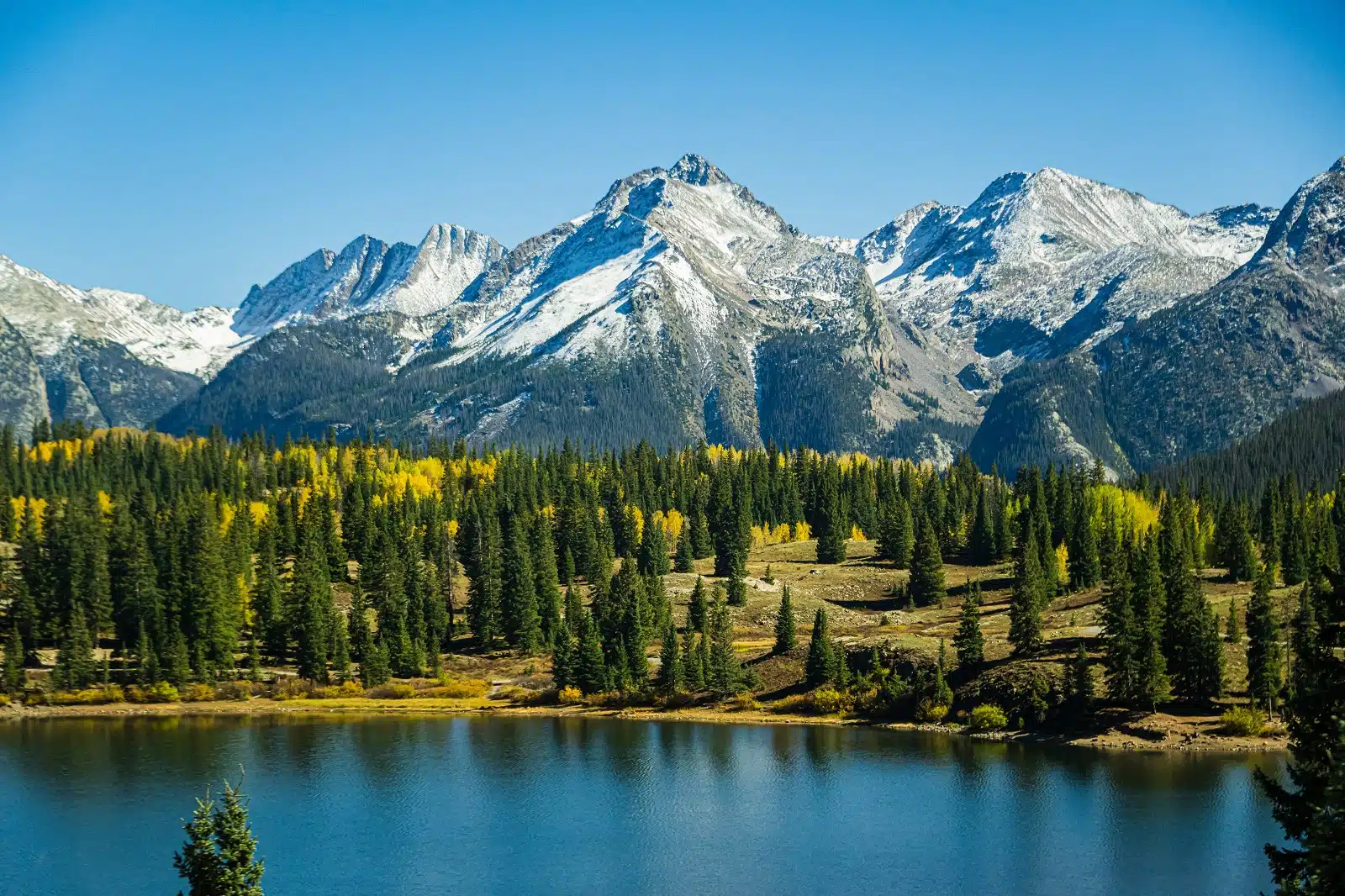
Image Credit: Shutterstock / Greg Meland
Rocky Mountain National Park in Colorado showcases the majestic beauty of the Rocky Mountains. The park offers a diverse ecosystem with elevations ranging from 7,860 to 14,259 feet, including montane, subalpine, and alpine environments. Visitors can explore over 300 miles of hiking trails that lead to breathtaking vistas, serene alpine lakes, and vibrant wildflower meadows. The park’s diverse wildlife, including elk, bighorn sheep, and moose, adds to the richness of the visitor experience. The Trail Ridge Road, the highest continuous paved road in the United States, offers panoramic views of the surrounding mountains and valleys. Rocky Mountain National Park’s rugged beauty and diverse landscapes make it a premier destination for nature lovers and outdoor enthusiasts.
Insider’s Tip: For a unique experience, hike the less frequented west side of the park, where trails like the East Inlet Trail offer solitude and unspoiled nature.
When to Travel: June to September is the best time to visit when the high-altitude roads and trails are most accessible. However, winter visits can be magical for those seeking solitude and are prepared for snow.
How to Get There: The nearest airport is in Denver, Colorado, with the park’s entrance just a short drive away. Car rental is recommended for flexibility.
6. Yosemite National Park (3.89 million visitors)
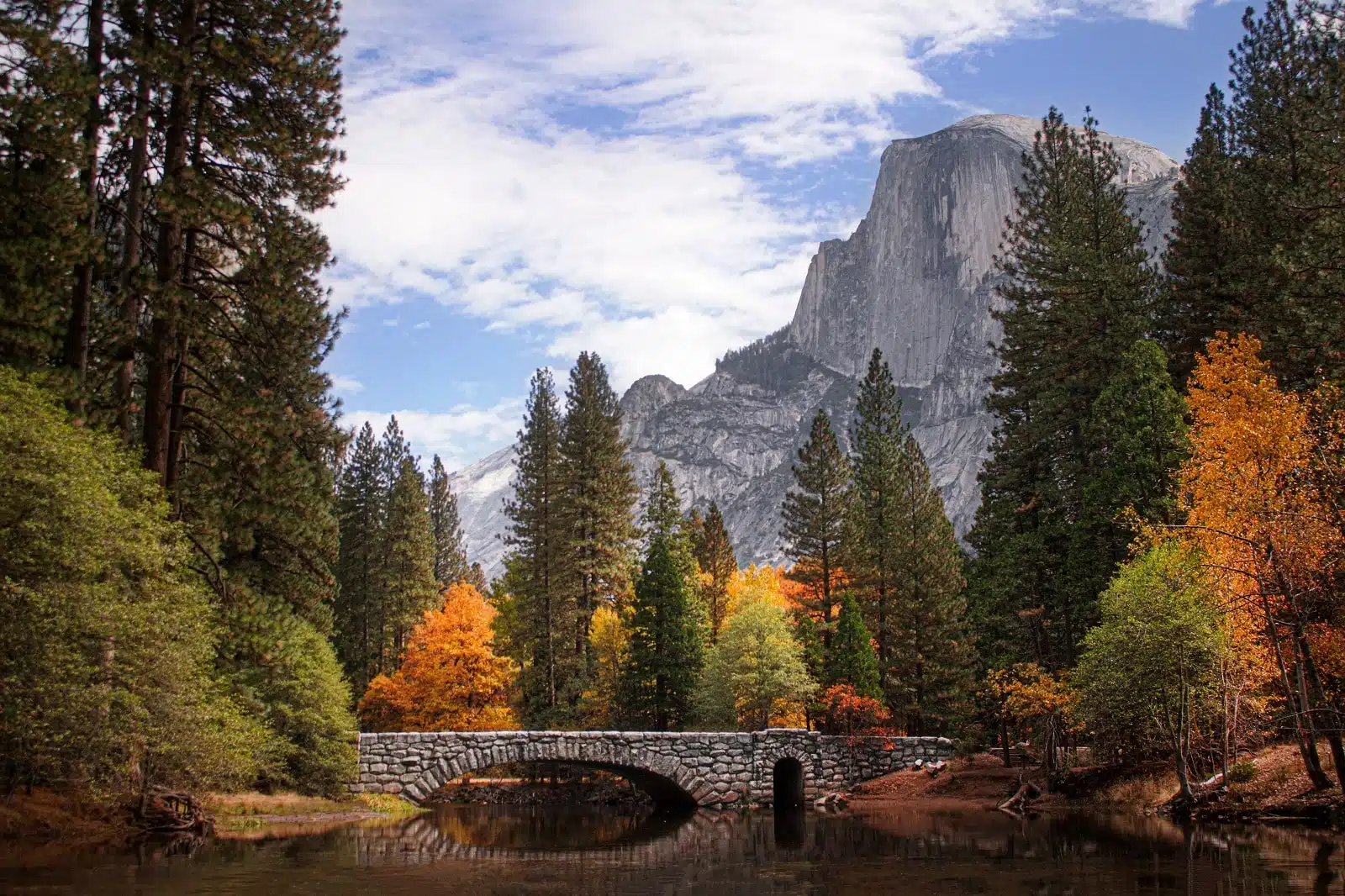
Image Credit: Shutterstock / sixfournorth
Yosemite National Park, located in California’s Sierra Nevada mountains, is famed for its towering granite cliffs, ancient giant sequoias, and powerful waterfalls. The park’s iconic landmarks, such as Half Dome and El Capitan, are known worldwide and offer challenging adventures and breathtaking views. Yosemite Valley, the heart of the park, is home to diverse wildlife and offers easy access to its most famous sights. Beyond the valley, the park’s vast wilderness areas provide opportunities for solitude and exploration. Yosemite’s extensive trail system includes paths through serene meadows, alongside rushing streams, and to the tops of towering waterfalls. The park’s commitment to conservation and its role in developing the national park idea make it a cornerstone of American natural heritage.
Insider’s Tip: For a less crowded experience, explore the park’s eastern sections, such as Tuolumne Meadows, which offers stunning scenery and a plethora of trails less traveled by the park’s millions of visitors.
When to Travel: Late spring (May and June) when the waterfalls are at their peak, and early fall (September and October) to avoid the summer crowds and enjoy pleasant weather.
How to Get There: The nearest major airports are in San Francisco, Sacramento, and Fresno, California. From these cities, car rentals are available to drive to the park. The journey offers scenic views and various entry points into Yosemite.
7. Acadia National Park (3.87 million visitors)
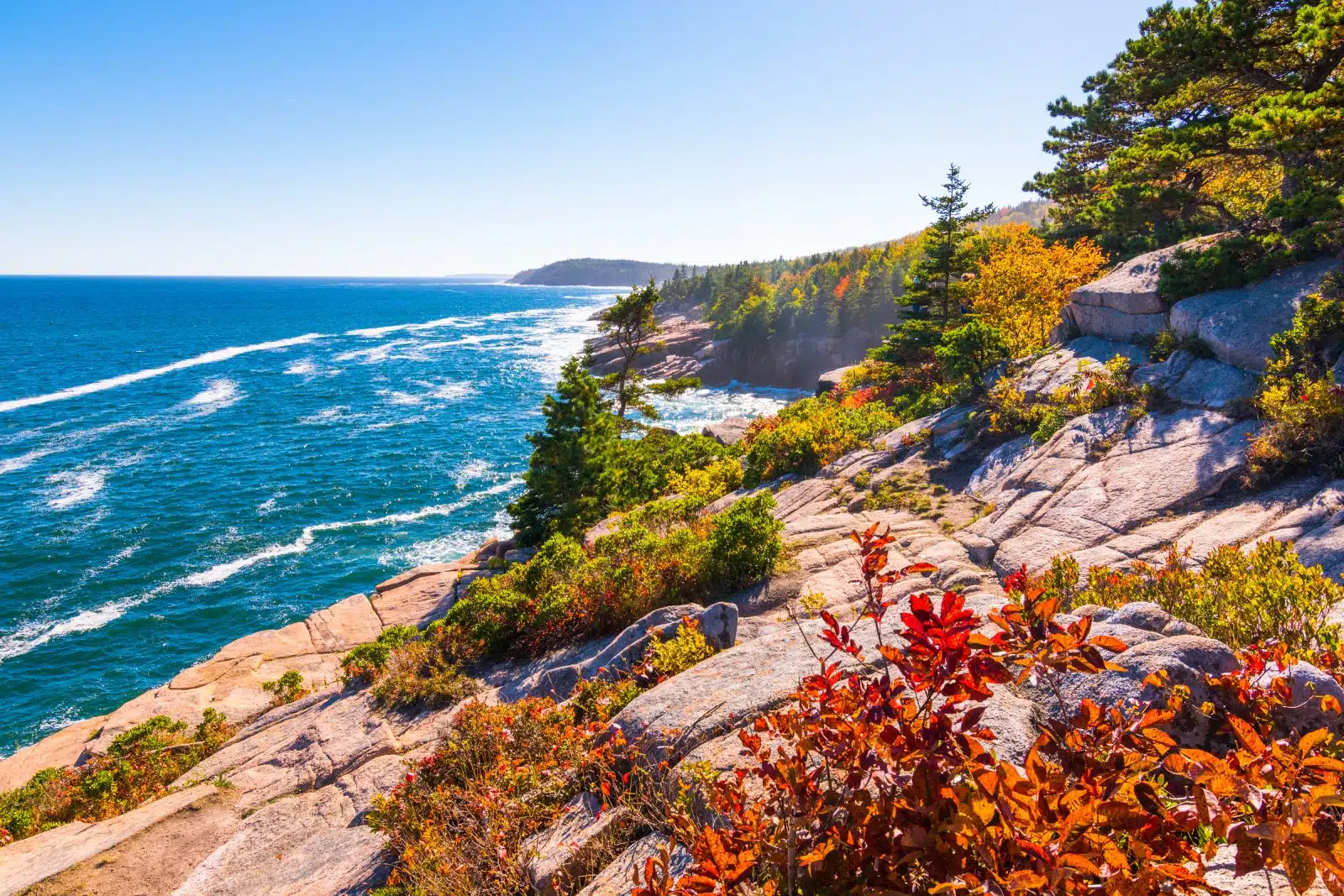
Featured Image Credit: Shutterstock / Eric Urquhart
Acadia National Park, located on the rugged coast of Maine, offers a unique blend of natural beauty and cultural history. Woodland, rocky beaches, and glacier-scoured granite peaks, such as Cadillac Mountain, the highest point on the U.S. Atlantic coast, mark the park’s landscape. Visitors can explore over 120 miles of hiking trails, enjoy scenic drives like the Park Loop Road, or cycle the historic carriage roads. The park’s diverse habitats support a wide variety of wildlife, from marine mammals to bird species. Acadia’s rich history is reflected in its landmarks, including lighthouses, cultural landscapes, and the stories of the Wabanaki people, the area’s original inhabitants. The park’s combination of natural beauty and accessible adventures makes it a cherished destination for visitors seeking to experience the splendor of the Atlantic coast.
Insider’s Tip: Visit the quieter side of Acadia on the Schoodic Peninsula, which offers spectacular scenery without the crowds of Mount Desert Island. The area provides unique biking and hiking opportunities.
When to Travel: The best times to visit are May through June and September through October, when the weather is mild, and the summer crowds have dissipated.
How to Get There: The nearest airport is Bangor International Airport in Maine, about an hour’s drive from the park. Car rentals are available at the airport for the scenic drive to Acadia.
8. Grand Teton National Park (3.41 million visitors)
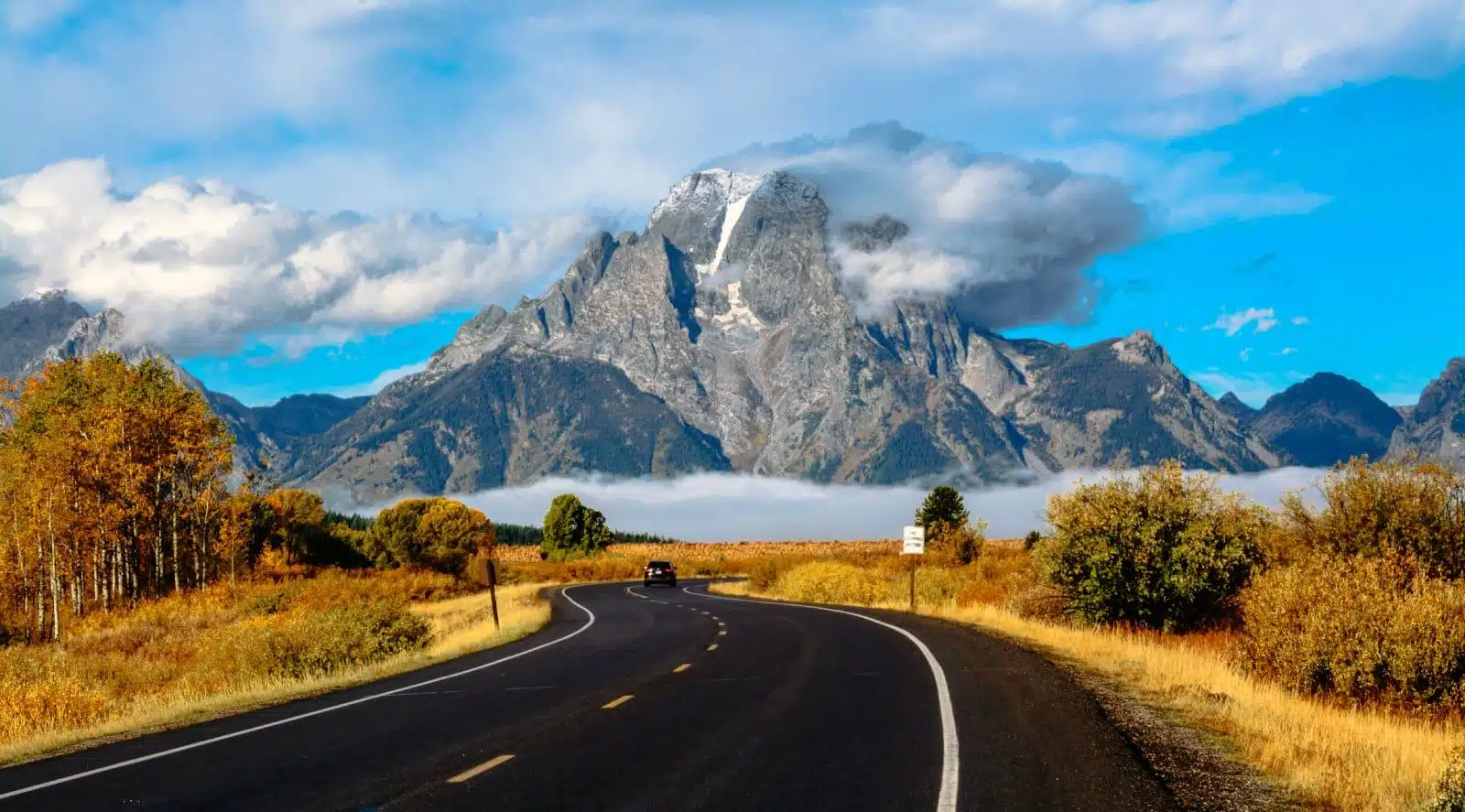
Image Credit: Shutterstock / Oomka
Grand Teton National Park in Wyoming is renowned for its stunning mountain landscapes, pristine lakes, and abundant wildlife. The Teton Range, with its jagged peaks rising dramatically from the valley floor, dominates the park’s skyline. The park offers a range of outdoor activities, including hiking, mountaineering, fishing, and wildlife viewing. The Snake River winds through the park, providing rafting and fly fishing opportunities. Historic ranches and homesteads scattered throughout the park offer a glimpse into the area’s past. The park’s diverse ecosystems support a wide array of flora and fauna, making it a vital area for conservation and study. Grand Teton National Park’s breathtaking scenery and rich biodiversity make it a must-visit destination for nature lovers and outdoor adventurers.
Insider’s Tip: For a unique perspective, take a boat ride on Jenny Lake or explore the park’s backcountry trails for a more secluded experience amidst the breathtaking scenery.
When to Travel: Late spring (May and June) for wildflowers and active wildlife, and early fall (September and October) for fewer crowds and stunning autumn colors.
How to Get There: The nearest airports are Jackson Hole Airport, located within the park, and Idaho Falls Regional Airport. Both offer rental cars for the scenic drive into the heart of Grand Teton.
9. Joshua Tree National Park (3.27 million visitors)
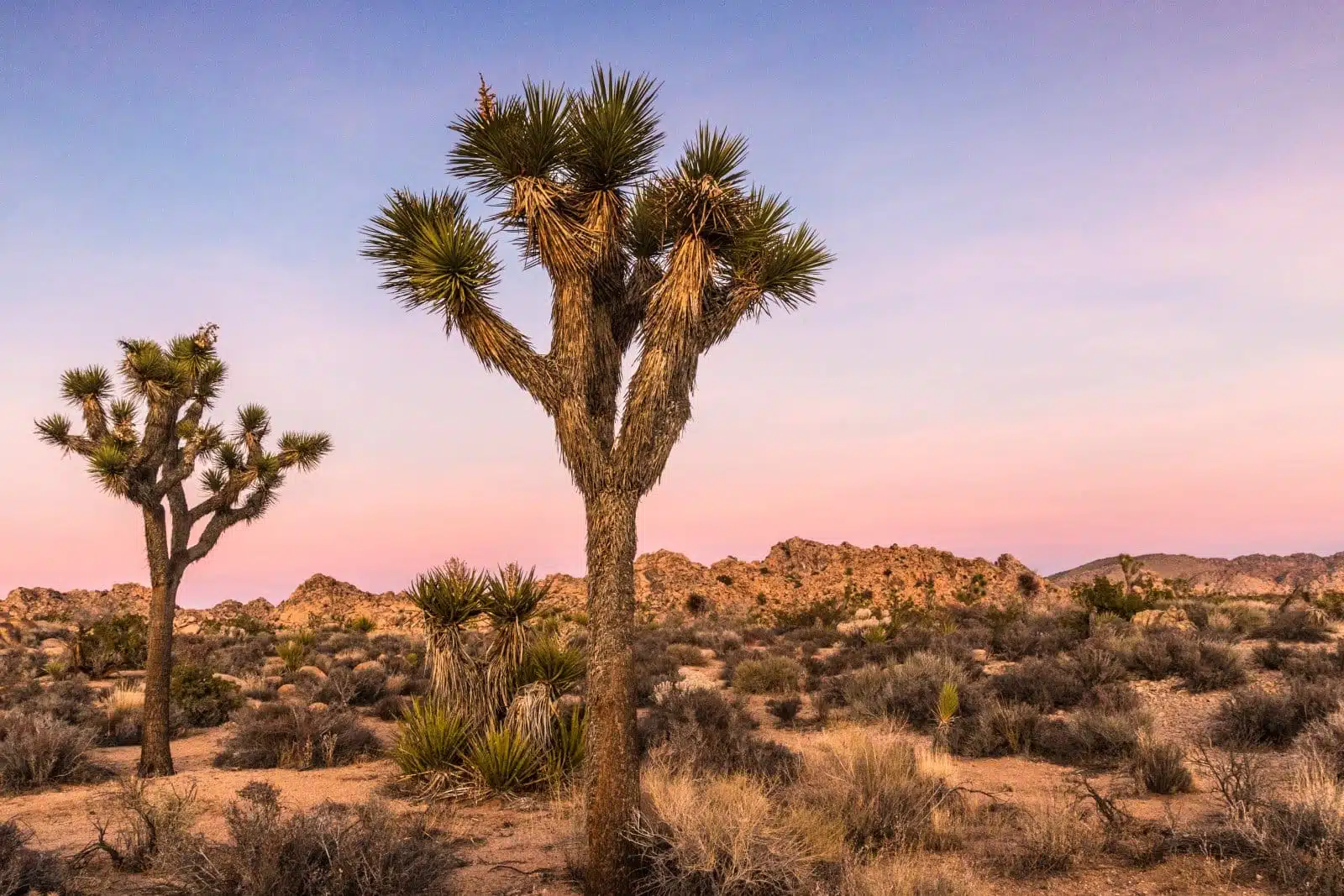
Image Credit: Shutterstock / BlueBarronPhoto
Joshua Tree National Park, located in southeastern California, is characterized by its stark desert landscapes, fascinating geologic formations, and the distinctive Joshua trees that give the park its name. The park encompasses two distinct desert ecosystems: the Mojave and the Colorado, each supporting a variety of plants and animals adapted to their unique environments. Rock climbers and hikers are drawn to the park’s rugged terrain, while stargazers take advantage of the dark night skies. The park’s cultural history is rich, with evidence of human habitation dating back thousands of years, including petroglyphs and historic mining sites. Joshua Tree’s otherworldly landscapes inspire creativity and provide a serene escape from the hustle and bustle of daily life.
Insider’s Tip: For stargazing enthusiasts, the park offers some of the darkest night skies in Southern California. Plan your visit around a new moon for an unforgettable view of the Milky Way.
When to Travel: The best times to visit are March through May and October through November when the temperatures are more comfortable for exploring the desert landscape.
How to Get There: Palm Springs International Airport and Ontario International Airport in California are the nearest airports. Car rentals are available at these locations for the drive to the park.
10. Olympic National Park (2.94 million visitors)
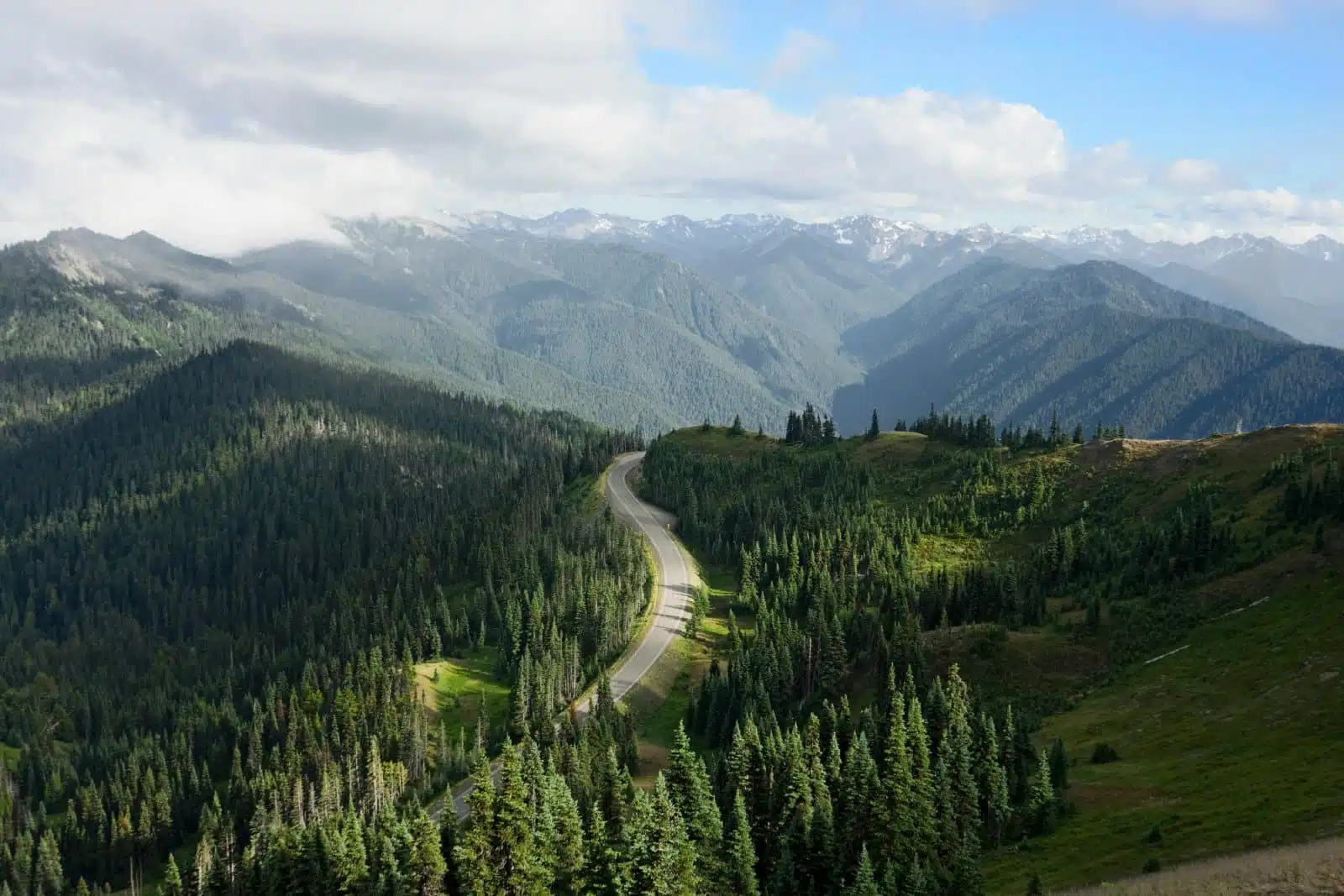
Image Credit: Pexels / Robert Schrader
Olympic National Park, a UNESCO World Heritage Site, encompasses nearly a million acres of diverse and untouched wilderness. From the rugged Pacific coastline to the temperate rainforests and the majestic peaks of the Olympic Mountains, the park offers an extraordinary variety of landscapes to explore. The Hoh Rain Forest, one of the largest temperate rainforests in the U.S., offers lush, green canopies and a network of trails that invite visitors to immerse themselves in its tranquil beauty. The park’s remote beaches, such as Ruby Beach, offer dramatic sea stacks and tide pools teeming with marine life. Olympic’s alpine regions, accessible via Hurricane Ridge, provide stunning vistas and opportunities for hiking amidst wildflowers and wildlife.
Insider’s Tip: Explore the park’s less-visited areas, such as the Staircase region, for a more solitary experience amidst the ancient forests and alpine landscapes.
When to Travel: The best times to visit are late spring (May and June) for the blooming wildflowers and early fall (September and October) for mild weather and fewer visitors.
How to Get There: Seattle-Tacoma International Airport in Washington is the nearest major airport. From Seattle, car rentals are available for the scenic drive to the park, which offers multiple entry points.
The Bottom Line

Image Credit: Shutterstock / Maridav
Each of these national parks offers a unique opportunity to discover the natural beauty and diversity of the American landscape. Whether you’re drawn to the desert vistas of Joshua Tree, the alpine peaks of the Rockies, or the rugged coastline of Acadia, these parks provide a backdrop for adventure and exploration. By planning your visit with these insights, you can ensure a more enjoyable and fulfilling experience. Remember, the beauty of these places lies not only in their landscapes but in the stories they tell and the experiences they offer. So pack your bags, respect the natural environment, and set out to explore the wonders of America’s most visited national parks.
More From The Green Voyage
12 Best Practices for Sustainable Travel in 2024 – How to Travel With Minimal Environmental Impact
Unlocking Hotel Perks – A Traveler’s Guide to Maximizing Hotel Reward Programs for Optimal Benefits
Travel Hacks for Frequent Flyers – 6 Tips and Tricks to Make the Best of Air Travel
The post The 10 Most Visited National Park Service Sites in 2023 first appeared on The Green Voyage.
Featured Image Credit: Image Credit: Pexels / Noelle Otto.
For transparency, this content was partly developed with AI assistance and carefully curated by an experienced editor to be informative and ensure accuracy.
Tips for Trip Success
Book Your Flight
Find an inexpensive flight by using Kayak, a favorite of ours because it regularly returns less expensive flight options from a variety of airlines.
Book Your Hotel or Special Accommodation
We are big fans of Booking.com. We like their review system and photos. If we want to see more reviews and additional booking options, we go to Expedia.
You Need Travel Insurance!
Good travel insurance means having total peace of mind. Travel insurance protects you when your medical insurance often will not and better than what you get from your credit card. It will provide comprehensive coverage should you need medical treatment or return to the United States, compensation for trip interruption, baggage loss, and other situations.Find the Perfect Insurance Plan for Your Trip
